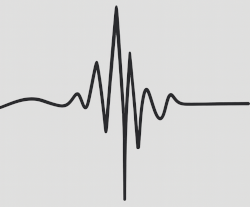1202 CE Quakes








Multiple authors, many contemporaneous or near contemporaneous, report extensive
damage to Damascus during the 1202 CE Earthquakes.
Contemporaneous source Ibn al-Latif al-Baghdadi produced
a letter containing an eyewitness account of the
effects of the 1202 CE Earthquakes in
Damascus, stating that the earthquake struck “at the
break of dawn, and lasted for quite some time.”
Reported damage included the collapse of “sixteen
crenellations
of the great mosque and one of the
minarets,” splitting of another minaret, and cracking
of the
leaden dome of the Great Mosque of Damascus, which is also known as
Dome of Nasr.
A building known as “
The Kallasa (Damascus lime-kilns)
”
was “swallowed up, as the earth was open, and two men
died.” Another man was said to have died at
“the
Gate of Jirun
.” Cracks appeared in various parts of the Great
Mosque, and “a great number of the city’s houses fell.”
Also contemporaneous but residing in Mosul at the time,
Ibn al-Athir reported that “many houses
were destroyed at Damascus.”
Damascene Sibt ibn al-Jawzi, who experienced the
earthquake as a young man in Damascus, repeated many of the same
details first reported in the letter produced by al-Baghdadi,
writing that the exterior minaret of the mosque fell,
along with sixteen of mosque's crenellations,
while "the dome of Nasr split in two.”
He also reported damage/destruction to
the "greater part of al-Kalasa [lime kilns] and the
Baymaristan of Nureddin."
Sibt ibn al-Jawzi added
that “most of the houses in Damascus were destroyed, with few
exceptions,” and during and after the earthquake, people fled to the
squares.
Damascene Abu Shama, born a year after the 1202 CE
earthquakes, reiterated that “part of the east minaret of the [Great
Umayyad] Mosque collapsed,” and that there was “massive damage to the
lime kilns (al-Kallasa), the Nur al-Din hospital
[aka Baymaristan of Nureddin], and nearly all the
houses in the city,” with the inhabitants fleeing to the open spaces.
He also recorded that “sixteen balconies fell from the [Umayyad]
Mosque,” and that the Nasr mausoleum [leaden dome] “split open.”
Bar Hebraeus reported that the earthquake
destroyed many buildings and high walls in Damascus.
Writing later, Ibn al-Dawādārī repeated these
accounts, noting that “some of the minarets of the Umayyad Mosque were
destroyed,” along with “most of al-Kallasah [lime kilns industrial area]
and the Nuri hospital.” He
added that “sixteen galleries fell from the mosque, the Qubbah al-Nasr
split,” and that people “fled to the public spaces.”

